What are the symptoms of coronary heart disease and how can they be prevented?
The main symptoms of coronary heart disease can be summarized as follows:
I. Angina pectoris
The more obvious symptom of coronary heart disease is angina pectoris, which often manifests asPressing sensation behind the sternum, a feeling of tightness and swelling, may radiate to the left arm, shoulder, jaw, throat, back, and also to the right arm. It is usually accompanied by marked anxiety that lasts 3 to 5 minutes. Sometimes the symptoms of angina in the elderly are atypical and may be characterized by tightness of breath, fainting, weakness, and belching.
II. Heart failure and arrhythmias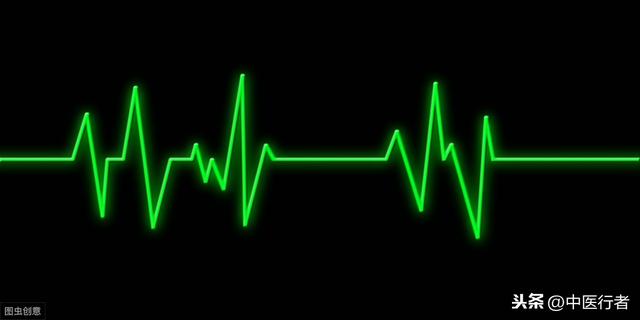
Some patients with coronary artery disease manifested as heart failure may show tightness, edema, fatigue, etc., and some show various arrhythmias, palpitations and other discomforts.
III. Myocardial infarction
Myocardial infarction can occur in severe cases of coronary artery blockage. Infarction is characterized by persistent intense pressure, stuffiness, or even cutting pain, with pain in roughly the same area as in angina pectoris patient, sometimes manifested as epigastric pain. It is often accompanied by low-grade fever, restlessness, excessive sweating and cold sweat, nausea, vomiting, palpitations, dizziness, extreme weakness, dyspnea, and a sense of impending death that lasts for more than 30 minutes, and often for several hours.
Fourth, sudden death can occur in severe cases of coronary heart attack.
Prevention of coronary heart disease requires attention to the following points:
1. Stabilize emotions and avoid outbursts of anger Most people with coronary heart disease are impatient and irritable. The Royal North Shore Hospital in Sydney, Australia, has shown that patients often have a heart attack before the anger, especially anger will make the risk of heart attack increased by eight times. SoForgiveness of others, forgiveness of oneself and forgiveness of others, and emotional stability and peace can help prevent coronary heart disease。
Most people with coronary heart disease are impatient and irritable. The Royal North Shore Hospital in Sydney, Australia, has shown that patients often have a heart attack before the anger, especially anger will make the risk of heart attack increased by eight times. SoForgiveness of others, forgiveness of oneself and forgiveness of others, and emotional stability and peace can help prevent coronary heart disease。
2、Avoid wind chill and cold
The U.S. National Oceanic and Atmospheric Administration released the "weather and health" has pointed out that: each time the cold wave transit, due to the cold stimulus, the human body blood vessels suddenly contraction, arterial average pressure rise, the myocardial oxygen demand index also increased accordingly, myocardial hypoxia phenomenon naturally have to be aggravated, cardiovascular morbidity and mortality rate will be significantly higher. In addition, the cold may cause lung infections aggravate the burden on the heart, coronary heart disease elderly patients, may be due to the cold lead to heart failure, or even death. ThereforeProtecting against wind and cold is necessary to prevent coronary heart disease.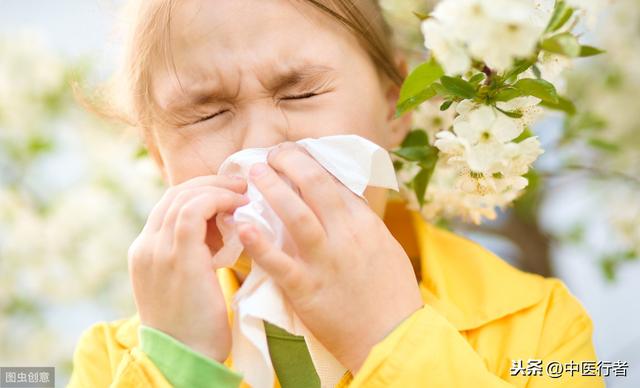
3、Appropriate exercise, combination of static and dynamic, avoid exertion
Fatigue is one of the main causes of coronary heart disease, but excessive ease, good static is not conducive to, the normal flow of blood, so appropriate exercise, static and static combination, and not overwork is more conducive to the prevention of coronary heart disease.
4、Reasonable diet, quit smoking and limit alcohol
Low salt and low fat, light diet, with grains and cereals as the mainstay, supplemented by fruits and vegetables, do not over-eat greasy. At the same time need to quit smoking and limit alcohol.
5、Rest on time, do not strain your mind and heart
Coronary heart disease patients should also not work hard, should always maintain a relaxed and happy mood, rest on time, do not stay up all night.
The so-called coronary heart disease, because the blood supply of the coronary artery of the heart blood vessels is the myocardial oxygen consumption balance is broken, resulting in transient or sustained ischemia and hypoxia of the heart angina pectoris, myocardial infarction, arrhythmia, heart failure and even sudden death. Coronary heart disease patients common pathophysiological basis is coronary artery atherosclerosis, prevention of coronary heart disease is mainly to control or delay the progress of coronary artery atherosclerosis.
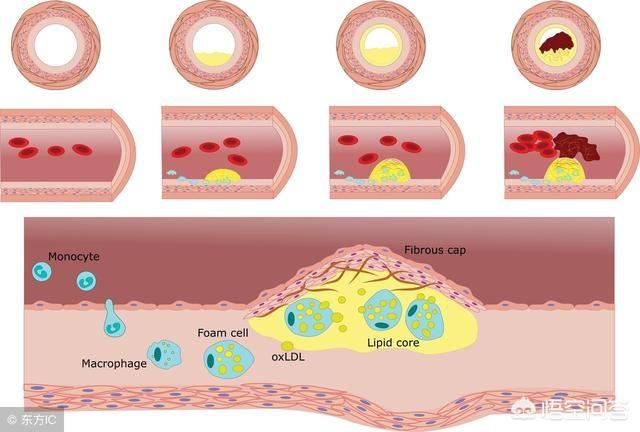
Clinically coronary heart disease can manifest as angina pectoris, myocardial infarction, arrhythmia, heart failure, sudden death and many other types, but the most common type is angina pectoris. If the patient appears obvious activity-related precordial pressure-like boring pain, about the size of the palm of the hand, can be radiated to the upper limbs and back, after resting for a few minutes ~ ten minutes can be relieved, should be highly suspicious of angina pectoris may need to go to the hospital for further examination, especially with coronary artery disease risk factors of the patient should be more vigilant.
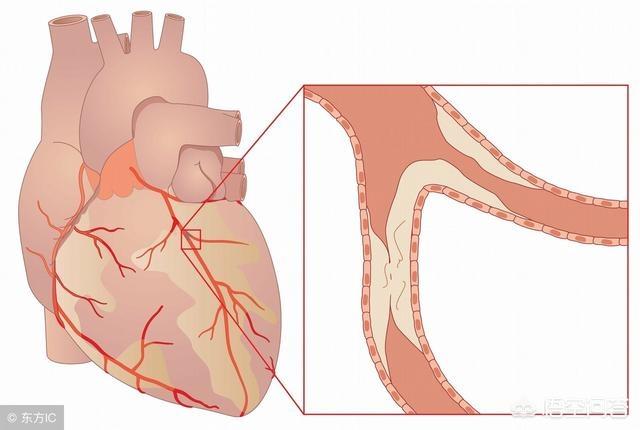
As for the prevention of coronary heart disease (CHD), the major risk factors for CHD are: age, gender (men over 45 years old, women over 55 years old or postmenopausal), family history of early onset cardiovascular disease (father/brother died of heart disease before the age of 55, mother/sister died of heart disease before the age of 65), hyperlipidemia, high blood pressure, diabetes mellitus, smoking, overweight, and obesity. Age, gender, and family history of early-onset cardiovascular disease cannot be controlled artificially, but factors such as hypertension, hyperlipidemia, hyperglycemia, obesity, and smoking can be controlled artificially, and the incidence of coronary heart disease can be significantly reduced through the control of these risk factors.
I'm the encyclopedia of health medicine. Having worked in a tertiary care hospital for twenty years, I have seen a wide variety of patients. Usually.Diseases are preceded by a series of alarms and signals. Some of the following signals occur before the onset of coronary heart disease:
I. Chest pain with no obvious trigger.
It is when resting or sleeping at night, there are chest pain symptoms, at the same time, may also be accompanied by profuse sweating, and even vomiting, nausea, etc., at this time, there is a high probability of acute heart attack, must be the first time to call the 120 phone, and timely access to medical care.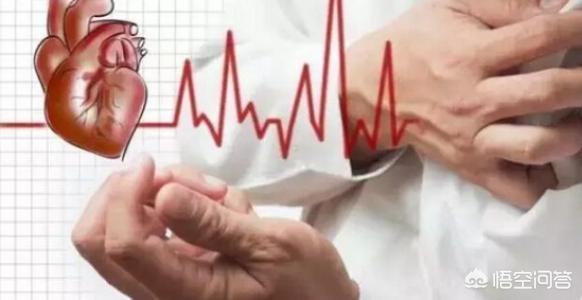
Second, angina symptoms worsen.
This is especially true for patients who have suffered from angina pectoris in the past and have progressively worsening chest pain;
If the episodes are more frequent than before, or if they become more severe and last longer, you need to be on high alert for heart attacks.

Third, other parts of the pain that are extremely easy to blindside.
Clinically, chest pain is not the only thing that can cause acute heart attack. There are also some extremely easy to be ignored parts of the pain, easy to be taken for other diseases, especially the sudden appearance of epigastric pain, toothache, left shoulder and arm pain, back pain, etc., can not be careless.
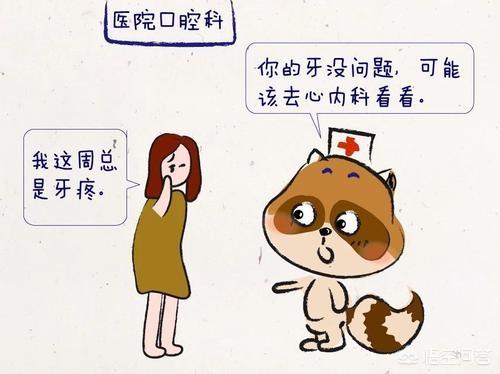
Coronary artery disease, angina or acute heart attack sometimes manifested as a burning sensation in the stomachAs a common disease in our lives, people often say that "nine out of ten people have stomach problems", so it is easy to attribute this pain to "stomach pain" rather than heart disease. Especially if this "stomach pain" is accompanied by vomiting, cold sweat, etc., it is very likely to be a sudden heart attack.
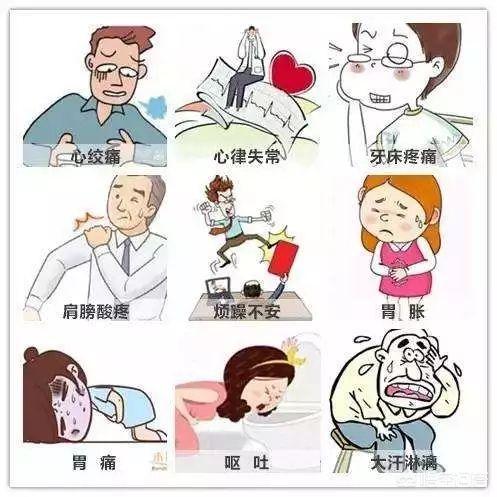
In addition, toothaches, sore shoulders, irritabilityAll of these, among others, can be unexpected expressions of a sudden heart attack.
I am "health medicine encyclopedia", the national second grade psychological counselor, third grade health management teacher. Follow me, health with you!
Coronary heart disease, the full name of coronary atherosclerotic heart disease. Although heart-related symptoms are the main manifestation, its essence is the disease of blood vessels, coronary artery lumen of different degrees of narrowing, insufficient blood supply to the heart, is the essence of coronary heart disease.
Common Symptoms of Coronary Heart Disease
Coronary heart disease is a general term for a large group of diseases, mainly divided into chronic coronary artery disease and acute coronary syndromes. Chronic coronary artery disease includes stable angina, ischemic cardiomyopathy and insidious coronary artery disease, etc.; acute coronary syndrome includes unstable angina and myocardial infarction.The specific type of disease varies and so do the symptoms. However, the main clinical manifestation is angina pectoris of varying degrees.Angina pectoris is typically characterized by crushing pain, tightness or constriction in the retrosternal and precordial areas. It may radiate to the left shoulder, the inside of the left arm up to the ring and little fingers, or to the neck, throat or jaw. Many elderly patients with angina symptoms are atypical, can be manifested as stomach pain, must pay attention to identify.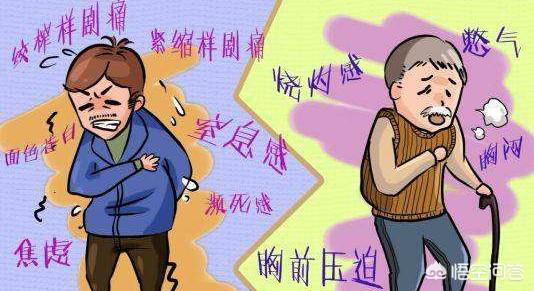
How can coronary heart disease be prevented?
The essence of coronary heart disease, is the disease of the coronary artery, the disease of blood vessels, preventive measures or to start from the blood vessels. For the prevention of coronary heart disease, we have to start from the prevention of coronary atherosclerosis. First of all, with age, each of us will have different degrees of atherosclerosis, butIt is the promotion of atherosclerosis by hypertension, hyperlipidemia, diabetes mellitus, smoking and alcoholism that is responsible for the development of coronary heart disease.Therefore, controlling blood pressure, stabilizing blood sugar, lowering blood lipids, quitting smoking and alcohol, slowing down the progress of atherosclerosis and protecting blood vessels are the best ways to prevent coronary heart disease!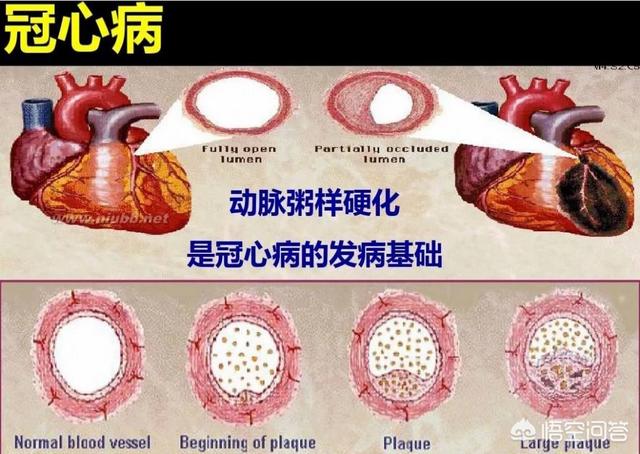 Dr. Zhang online - medical science that is accessible to the common people - welcome to follow and comment!
Dr. Zhang online - medical science that is accessible to the common people - welcome to follow and comment!
Coronary heart disease, the full name is coronary atherosclerotic heart disease. To understand coronary heart disease, there are 2 concepts to know first:
1、What is a coronary artery?
2. What is atherosclerosis?
The coronary arteries are the arteries that are dedicated to supplying blood and oxygen to the heart, and they are called coronary arteries because these arteries surround the heart in a circle that looks like a crown. To put it bluntly, the coronary arteries are the arteries of the heart.
Atherosclerosis, that is, hardening occurs within the blood vessels, and the hardened blood vessels will narrow, and after narrowing there will be less blood passing through, then the heart will be relatively ischemic. If the ischemia of the heart is so severe that it causes dysfunction of the heart and symptoms such as chest tightness, chest pain, shortness of breath, etc., it is called coronary heart disease.
Therefore, the symptoms of coronary heart disease are mainly chest pain, pressure-like pain in the precordial area, like a stone or an elephant pressing on the chest, unable to breathe, and there will be tightness in the chest, a feeling of stuffiness, and so on.
To prevent coronary heart disease, we need to prevent atherosclerosis. There are many factors related to atherosclerosis, the most prominent of which are: high blood pressure, high blood sugar, high blood fat. When blood sugar, blood pressure, blood fat are high, it is easy to lead to blood vessel damage, resulting in atherosclerosis, so the key to preventing coronary heart disease is to prevent high blood pressure, high blood sugar, high blood fat. But to prevent these three highs is sometimes not easy, then we have to treat these three highs early and effectively. Once found high blood pressure, high blood sugar, high blood fat, we must through dietary control, exercise, exercise, medication and other means to reduce blood pressure, blood sugar, blood fat, so as to achieve the purpose of preventing coronary heart disease. Diseases have done so, some people will still have coronary heart disease, because coronary heart disease is also related to genetic, immune, environmental and other factors.
Most diseases have precursor symptoms, even the so-called "invisible killer" hypertension, some patients will have a slight abnormal reaction, these are the body's distress signals!
Coronary heart disease, as a common heart disease, naturally there are abnormal symptoms for us to find out in advance to confirm the diagnosis, but compared to other diseases with a variety of symptoms, coronary heart disease has only two typical symptoms: chest pain and chest tightness.
And I prefer to refer to the two together, because patients often have chest pain and chest tightness at the same time, both of which are relatively common clinical symptoms, caused by many diseases, but patients with coronary artery disease have a more specific nature of chest pain, mostly pressing tightly constricted suffocating pain, which is not only chest pain, but also an embodiment of chest tightness, so it's not difficult to distinguish between them in daily life.

prerequisite for the onset of symptoms!
As coronary heart disease is relatively common, many people will have an understanding of its pathogenesis, the most straightforward explanation is: "the blood vessels are blocked, the blood can not pass, the amount of activity as long as too large, because of ischemia and chest pain and chest tightness," which is reflected in daily life, is the timing of the attack, the patient tends to be in the activities and high-intensity exercise chest pain Chest tightness and other symptoms, and then will be relieved after rest.
But is coronary heart disease really that simple?
The above timing of the attack is indeed correct, but not comprehensive, this is only the characteristics of stable angina (exertional angina), and in the group of patients with coronary heart disease, there is also a part of the patient even in the resting state, may still appear chest pain chest tightness and other symptoms, there is no too obvious trigger for the onset of this type of patients is called unstable angina, and even more confusing.
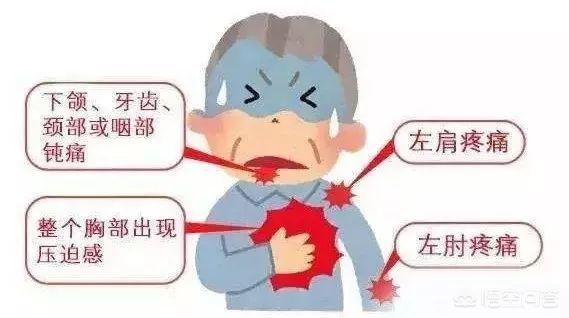
Radiation of chest pain!
I believe that many of you will want to refute me when you read above that there are only two typical symptoms of coronary heart disease. After all, as a common heart disease, you all have examples of this or that around you.
They often have a variety of pain, not limited to the chest, but in fact, this kind of pain is not limited to the chest, also in the concept of "chest pain", coronary heart disease chest pain is actually angina pectoris, but angina pectoris has a unique feature, that is, the radioactivity of the patient's pain response will therefore radiate to other parts, such as the back of the chest, left arm, shoulder, jaw, throat and so on. The patient's pain response will thus radiate to other parts of the body, such as the back of the chest, the left arm, the shoulder, the jaw, the throat and so on.
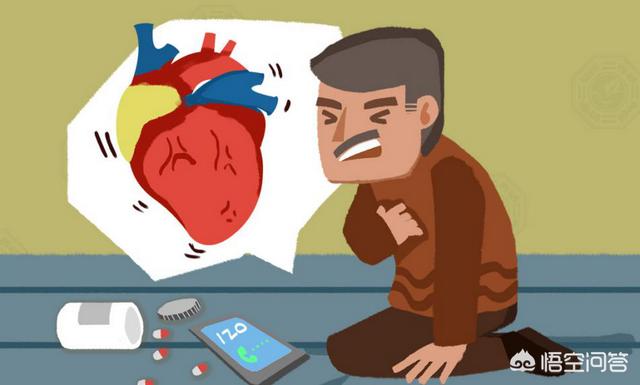
How to prevent coronary heart disease?
Avoiding all high-risk factors that can trigger coronary heart disease should not require too much explanation, and you should all be able to understand this.
1, change bad habits, moderate exercise, avoid staying up late.
2, standardize the diet structure, try to increase the proportion of vegetables and fruits intake, reduce the intake of high oil, high salt, high fat and other food.
3, away from high-pressure environments, do not get overly excited, pay attention to sorting out their own emotions.
4, daily attention to protect the normalcy of the spine, avoid long periods of immobility, reduce the burden on the spine.
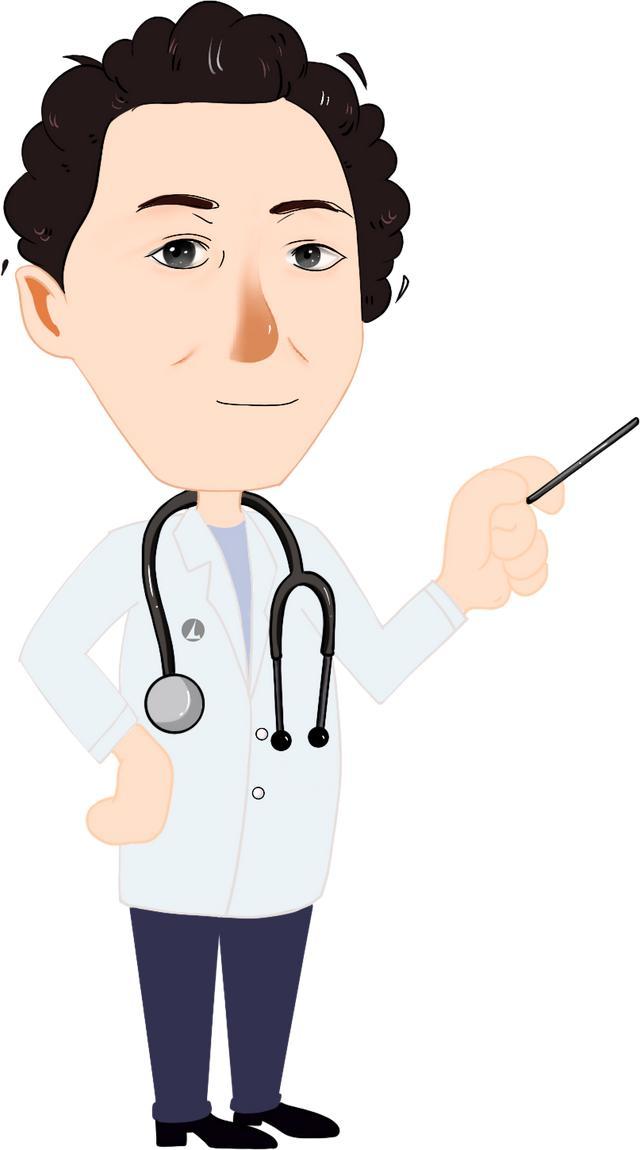
I hope my answer helps you!
If there's anything you don't understand, comment and private message me!
Symptoms of coronary heart disease
Thanks for the invitation! Coronary heart disease is the abbreviation of coronary heart disease, which can be literally understood as a result of coronary artery spasm, narrowing or blockage leading to ischemia and hypoxia of the heart or even myocardial necrosis. Coronary heart disease can be categorized into various types according to the symptoms, so what are the common symptoms of coronary heart disease?
The most common and typical symptom is precordial or retrosternal pain, which may be accompanied by radiating pain in the left shoulder and left arm. The pain may be colicky or crushing in nature, with a sense of dying. The pain may improve with a few moments of rest, and a nitroglycerin tablet or a fast-acting heart pill can have an immediate effect. The majority of patients are triggered by exertion or exercise, while a small number of patients with variant angina may have an attack at rest or during sleep, which is more dangerous and can result in a sleep that does not wake up the next day.

Prevention of coronary heart disease
As people's standard of living rises, the number of patients with coronary heart disease also increases. Patients with hyperlipidemia are most vulnerable to coronary heart disease. This is because blood lipids and blood cholesterol damage the endothelium of blood vessels and deposit in the broken places to form atherosclerosis. Obviously, these hardened plaques become a foreign body in the blood vessels, preventing the normal passage of blood flow, if the plaque in the coronary artery blood vessels are formed, then the coronary arteries are blocked, resulting in the symptoms are the symptoms of coronary heart disease mentioned above. So the best measure to prevent coronary heart disease is to prevent and control hyperlipidemia, the usual diet should be meat and vegetables, fatty meat and animal offal of these high cholesterol foods eat less, while combining moderate exercise, avoid excessive obesity, so that hyperlipidemia basically will not find you. If you already have hyperlipidemia how to do, statin drugs can be treated, these drugs can significantly reduce the risk of coronary heart disease.
Coronary heart disease refers to heart disease caused by atherosclerosis of coronary arteries, which narrows or blocks the lumen of the blood vessels, or (and) due to functional changes in the coronary arteries (spasm), resulting in myocardial ischemia and hypoxia or even necrosis. Clinical manifestations often include tightness in the chest, crushing or suffocating pain that radiates to the neck, jaw, left shoulder, left arm and back, etc. Dizziness, shortness of breath, sweating, nausea and fainting can also be seen, and in severe cases, death can occur as a result of heart failure or myocardial infarction.

1. Types of coronary heart disease and risk factors
Depending on the location, extent and degree of lesions occurring in the coronary arteries, coronary artery disease can be categorized into five different clinical types: angina pectoris type, myocardial infarction type, heart failure and arrhythmia type, sudden death type, and asymptomatic ischemia type.
The main risk factors for coronary heart disease are: hypertension, hyperlipidemia, diabetes, obesity, excessive alcohol consumption, smoking, lack of activity, mental stress, etc., as well as men >45 years old, women >55 years old or postmenopausal, and a family history of cardiovascular disease. Exertion, strenuous exercise, emotional stress (anger, anxiety, excitement), sudden changes in climate, and a full meal are triggering factors for coronary heart attack.
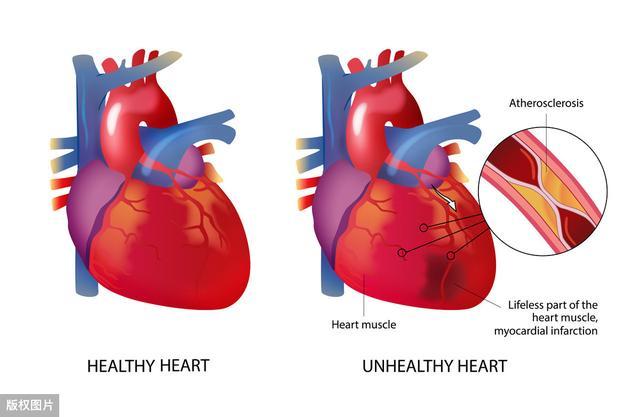
2. Secondary prevention is important
Why does sudden cardiac death occur in seemingly healthy people? It is because of something called "unstable plaque". This type of plaque does not normally cause any symptoms because it is small and does not block blood vessels. However, due to its instability, the plaque can suddenly rupture and form a localized blood clot. As the thrombus develops, it may eventually block the coronary artery completely, leading to severe ischemia and hypoxia of the heart muscle, threatening the patient's life.
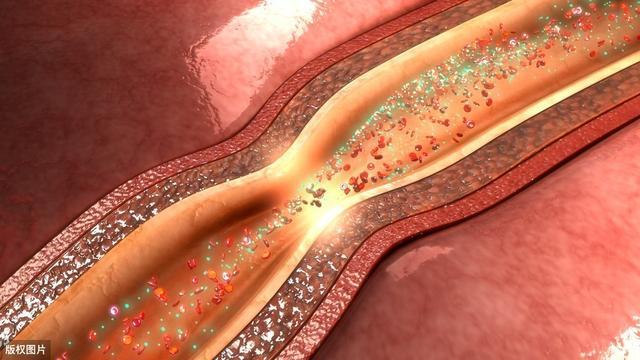
Secondary prevention of cardiovascular diseases refers to the early detection, diagnosis and treatment of patients who have developed coronary heart disease and other atherosclerotic vascular diseases, with the aim of improving symptoms, preventing progression of the disease, improving prognosis, lowering the rate of death and disability, and at the same time preventing recurrence of the disease. For patients with coronary heart disease, secondary prevention is particularly important, and measures include improving lifestyle, drug treatment, and controlling various risk factors that affect prognosis.
In the modern treatment of coronary artery disease, percutaneous coronary intervention (PCI) is currently the main effective treatment method, but the acute or subacute thrombosis, in-stent restenosis, and hemodialysis after the procedure still have some patients with chest tightness, shortness of breath and other uncomfortable symptoms, so that the effect of interventional therapy is greatly affected.
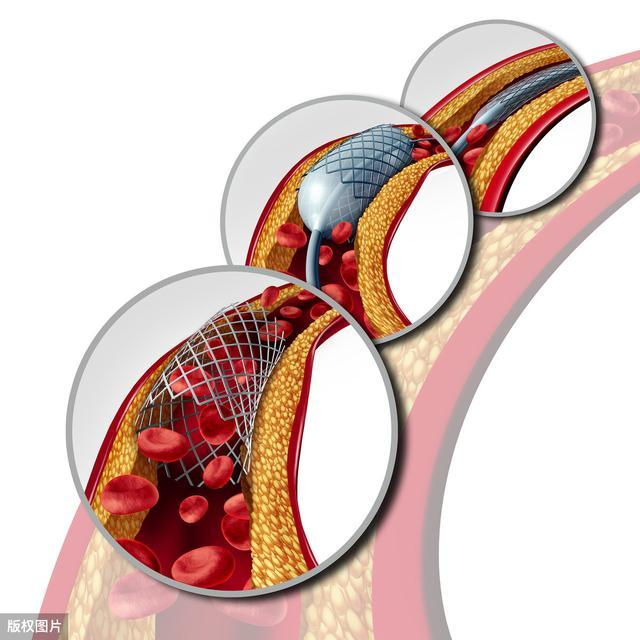
3. The role of traditional Chinese medicine in the prevention and treatment of coronary heart disease
Combination of Chinese and Western medicine in the treatment of coronary heart disease is a process of medical practice in which two different theoretical systems of medicine interpenetrate and complement each other's strengths. Chinese and Western medicines have their own strengths, and each of them has its own advantages in a certain stage of the disease or a certain part of the disease, so they should be used for each other. Numerous clinical studies have found that compared with Western medicine alone, the combination of Chinese medicine can bring more benefits to patients, such as Shen Shao Tablet.
According to TCM, the symptomatic elements of patients after PCI for coronary artery disease are blood stasis, qi deficiency, yin deficiency, phlegm, yang deficiency, and heat, especially qi deficiency and blood stasis as the main symptomatic elements throughout PCI for coronary artery disease.
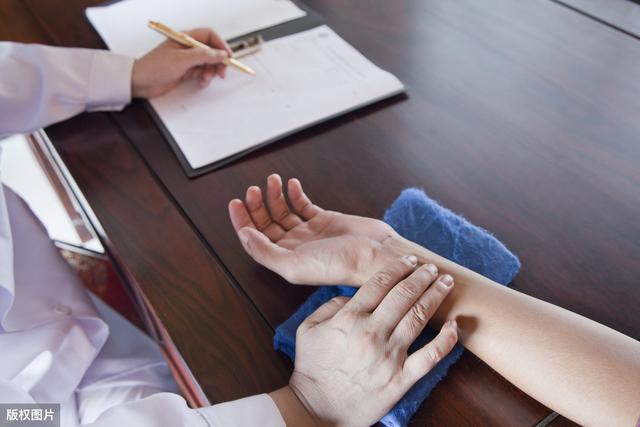
Ginseng Tablet is composed of ginseng stem and leaf saponin, white peony. Ginseng can replenish the vital energy and is the key medicine for replenishing vital energy. Ginseng stem and leaf saponin has ginseng-like effect and has obvious anti-myocardial ischemic effect; white peony can activate blood circulation and eliminate blood stasis, nourish blood and soften the liver; the two medicines work together to harmonize and promote each other, and together they play the role of benefiting the vital energy and activating the blood circulation.
Ginseng and peony tablets can benefit qi and activate blood circulation, and qi and blood circulation, which can improve the viscosity of whole blood and promote blood circulation. Modern pharmacological research shows that Shenpao Tablet can dilate coronary artery, increase coronary blood flow, reduce the degree of myocardial ischemic injury, promote the electrocardiogram ST-segment changes back to the equipotential line, reduce myocardial oxygen consumption, increase coronary blood flow, inhibit platelet aggregation, reduce blood viscosity, and effectively prevent the formation of thrombus.
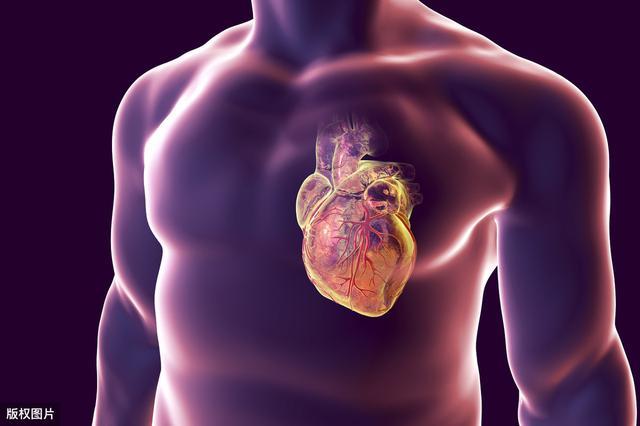
No matter how Chinese medicine is involved in the treatment of coronary heart disease and secondary prevention, it must conform to the basic features of Chinese medicine, namely, the holistic concept and the theory of evidence-based treatment, which are the essence of Chinese medicine and play an important role in the treatment of coronary heart disease throughout. At the same time, they are complementary to each other, and the identification of evidence needs to be carried out under the guidance of the holistic concept, closely following the basic theories of Chinese medicine, especially the "prevention before disease" and "prevention of changes in existing disease" principles of "treatment of future diseases", which reflect the basic characteristics of Chinese medicine, i.e., the holistic concept and evidence-based treatment. It closely follows the basic theories of Chinese medicine, especially the principles of "prevention before disease" and "prevention after disease" in the "treatment of future diseases", reflecting the advantages and characteristics of Chinese medicine.
I'm Dr. Small Eyes.
Specializing in cardiovascular diseases
Commitment to public health
Cardiologist with a passion for fitness
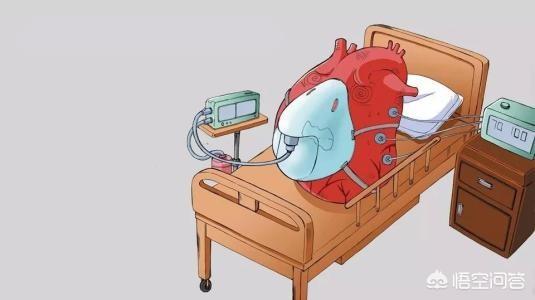
Symptoms of coronary heart disease are listed below.
First point, chest holding.
It felt like I couldn't draw breath, like there was a boulder pressing down on my chest, and it felt like my whole chest was constricted.
However, coronary heart disease is often all but irritating pain.
The second point is that symptoms of coronary heart disease often appear after activity.
Often it's all because your heart muscle cells are deprived of oxygen when you're active, which leads to a hard chest hold.
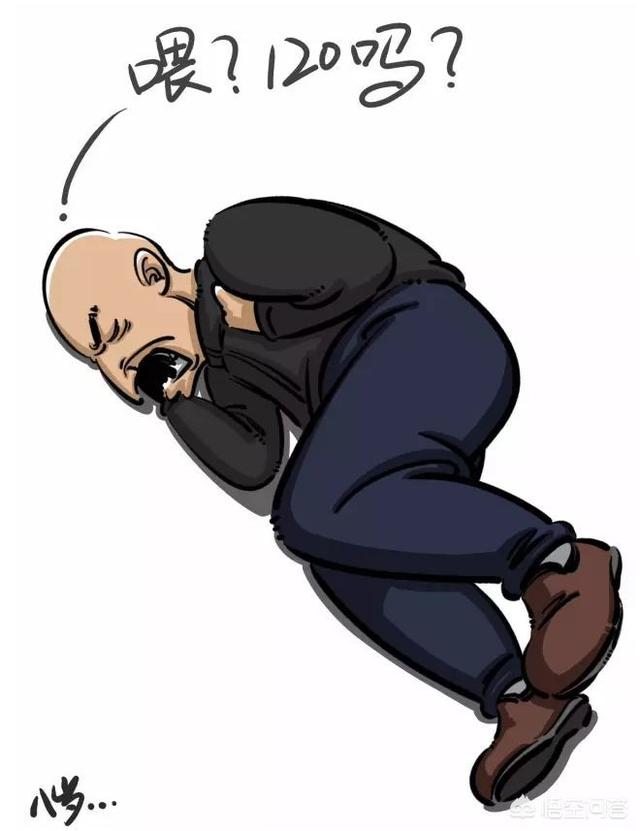
Coronary heart disease is often able to be relieved with rest and a teeny bit.
If you do not get adequate relief from these difficulties, Dr. Small Eyes is considering that you may have a myocardial infarction occurring, and you need to go to the hospital for treatment in Liko.
As far as preventing coronary heart disease, Dr. Small Eyes thinks most of his patients are aware of it.
First, don't smoke or drink and don't get overweight.
Second, please keep exercising.
I'm Dr. Small Eyes.
Like me if you like my answer!
Let me know if you think my answer is not good enough by replying
If you think my answer makes sense, you can shut me down.

Coronary heart disease is ischemic heart disease!
Coronary heart disease is a disease in which the coronary arteries are blocked by atherosclerosis and narrowing of the coronary arteries due to high blood cholesterol or blood viscosity, so that the blood cannot enter the heart and the heart is deprived of oxygen and ischemia.
Due to the usual long-term high blood fat is not effectively controlled, or long-term blood viscosity is not effectively improved.
Such blood flows more slowly in the blood vessels, the blood lipids in the blood will slowly adsorbed in the coronary artery blood vessel wall, so that the blood vessel wall adsorbed a layer of millet grains atherosclerotic material, so that the blood vessel wall thickening the blood vessel wall becomes narrow, affecting the blood to enter the heart, to the heart supply oxygen blood supply.
When the coronary artery blood vessel stenosis to 55 a 65%, it will make people feel panic, chest tightness, shortness of breath, fatigue, cold hands and feet or hands and feet numbness. When this phenomenon occurs, many people will mistakenly believe that also by the old, not (here refers to people over 50 or 60 years old). At this time, if you go to the hospital to see a doctor, the doctor will usually prescribe some blood circulation and blood stasis drugs, such as boat ginseng resurrection tablets and other drugs to relieve the condition.
When the coronary artery stenosis blocked to 65 a 75%, then also basically appeared more serious hypoxia ischemia. The patient will feel arrhythmia, radiating pain in the chest, sweating and pale. When this phenomenon occurs, the patient must generally use fast-acting heart pills to relieve the condition. If the patient does not have a fast-acting heart pill medication on the body or in the evening, the heart, but hypoxia and ischemia, resuscitation time is only four minutes, known as the golden four minutes. From the onset of the call 120 ambulance, from the hospital to the scene of the patient, it is estimated that it is difficult to get first aid within four minutes, even if you are lucky enough to arrive at the hospital resuscitation room, it is said that only one percent of the people can be saved.
When the coronary artery vessels are narrowed and blocked to 75% or more, if they make it to the hospital in time, doctors will advise their family members to give the patient a stent installation or cardiac coronary artery vessel bypass surgery. The estimated cost of a surgery should be around tens of thousands of dollars.
How to prevent the occurrence of coronary heart disease? First of all, we should change the bad habits of the past, quit smoking and drinking, usually live a balanced nutrition, try to eat less high oil and high fat and animal offal food, try to eat more fruits and vegetables and other light food. Appropriate control of diet, do eat well in the morning, eat enough at noon, eat less at night. Exercise properly to burn fat and avoid obesity. Pay attention to rest and reduce staying up late. Drink proper water to dilute blood. Use weak laser physical therapy to improve blood viscosity and reduce blood fat.
There is nothing wrong with preventing coronary heart disease as long as you can stick to the above matters.
The source of all diseases stems from blood pollution! Blood pollution is the source of all diseases!
This question and answer are from the site users, does not represent the position of the site, such as infringement, please contact the administrator to delete.